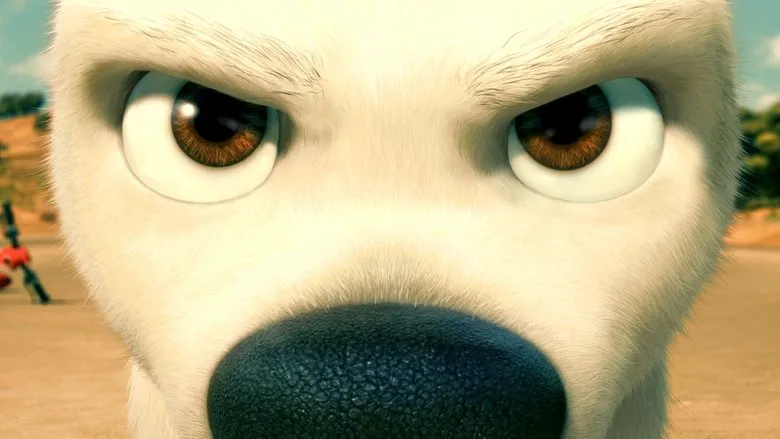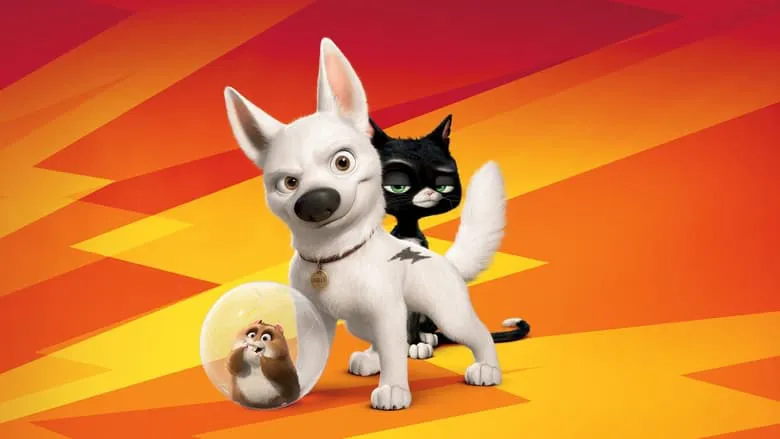
Bolt, a puppy, is plucked straight from a pet store and thrust into a television series where he plays a super-dog. This canine hero is capable of catching criminals, leaping over buildings, and melting concrete with laser vision. To ensure Bolt remains convinced of his superpowers and performs admirably on set, he’s confined to his trailer after filming. One day, he escapes, only to find himself in a strange world where his super-jumps are no longer possible. Reality bites. Now, the poor dog must embark on a long journey from New York to Hollywood, where his beloved owner, the super-girl from the show, resides. Bolt believes she’s in mortal danger, and in a way, he might be right.
Disney’s Transformation: From Bland to Bold
For the past three decades, there’s been little reason to pay attention to Walt Disney Studios’ output. The once-great idea had devolved into an international corporation peddling Winnie the Pooh merchandise. Disney posters resembled advertisements for children’s bubblegum, featuring animals in pink and blue outfits. However, with “Bolt,” Disney’s advertising has become something you wouldn’t be ashamed to display in a place that sells gum for adults. The saccharine, simplistic imagery has been replaced by advanced digital animation, two-dimensional plushness by trendy 3D, and the animals now sport determined, purposeful expressions, like someone about to push the nuclear button.

Pixar’s Influence: A Touch of Rebellion
Disney alone would never have conceived a plot twist where the vapid stereotypes of mass culture, which it so eagerly propagated, are re-exploited with a twist. In other words, the comic-book puppy transforms back into a normal dog. This creative spark comes from Pixar, with whom Disney has a sort of creative-commercial alliance. Pixar guru John Lasseter is now in charge of creativity at Disney. After “Tinker Bell” (2008), “Bolt” (2008) was the second Disney project that Lasseter salvaged and brought to market. The result is reminiscent of “Finding Nemo” (2003), with nods to “Toy Story” (1995), “The Incredibles” (2004), “Cars” (2006), and so on, but simpler and focused on a dog. In short, it’s Pixar, but a little bit smuggled in, like an unlocked iPhone.
Imperfections and Missed Opportunities
A Rushed Production
Firstly, the haste with which “Bolt” was transformed into a 3D blockbuster is evident. The dog itself is undeniably adorable, and anyone with a similar canine companion at home will experience a surge of warm feelings while watching the film. However, another important character, the cat that the super-puppy encounters, didn’t receive enough processing power. Cat owners will find this pixelated blob with a tail rather painful to watch.

Creative Differences and a Sagging Middle
Secondly, “Bolt” was originally supposed to be directed by Chris Sanders [III], the talented creator of “Lilo & Stitch” (2002), but Lasseter removed him from the project due to directorial disagreements. The point where Lasseter fired him, roughly halfway through the film, is where you can safely doze off for about thirty minutes, as the hired replacements couldn’t come up with anything particularly remarkable for the dog.
By the film’s finale, the plot becomes so predictable that the writers seem to lose sight of their dog, entrusting the entertainment to the absolutely brilliant hamster, Rhino, and the remarkably accurate pigeons. It’s these characters, not the super-dog turned ordinary dog, who deserve a sequel.